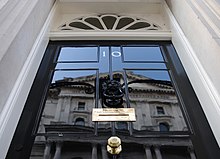PhilipL
Established Member
You'll know what I mean. A deep green with a bit of gloss. Is it some kind of enamel?

It's not oil paints which get banned it's solvent based oil paints with high VOCs. Hence increasing use of trad linseed oil paints, particularly Sweden where it never went away.nope its Grachten groen = which is a dark british reacing green with a pinch of black. Older painters used oil paint with a touch of turps and a really good brush. A dark grey primer, then lak plamuur = paint with filler and a colourant to suit top coat, then 2 coats of gloss.
Todays regs has banned oil paints for professionalsbut Diy'ers can still buy and use it.
Modern paints acrylic or polyurethenes are ok but they can't match the old gloss enamel paints
hth, K








Yes I know about the VOCs.True Jacob, the main reason oil based paints are banned for profesionals [in NL ] is the fact that painters suffered from very early dementia through constant exposure to the "poot" or in English the evaporating VOC , mainly synthetic turpentine oils, sikatifs [ hardeners] and thinners but one can still buy oil paint in the DIY sheds
....
Yes I know about the VOCs.
Traditional linseed oil is the safe alternative VOC free. Why Allback?
Have been using it fo 10 years or so and it does what is says on the tin.
It's very different in use compared to modern paints.
Expensive per tin but has very good coverage, long shelf life, no need for thinners, easy to apply once you've got used to it.
No they are all dull colours and low gloss merging on matt finish. But they do stick like s**t to a blanket! Even seems to hold down old gloss which had started to peel, and does metal work fine with no primer.yes I know of them, but never used them, do they make a high gloss outta interest?
K
swedish putty is the secret to Amsterdams super glossy doors.
Can you post the details of the business inFrance please?True Jacob, the main reason oil based paints are banned for profesionals [in NL ] is the fact that painters suffered from very early dementia through constant exposure to the "poot" or in English the evaporating VOC , mainly synthetic turpentine oils, sikatifs [ hardeners] and thinners but one can still buy oil paint in the DIY sheds
Still trying to find a decent high gloss finish that's water based. Luckily I found a business in France that sells 2 pack celulose in small [ 5L ] tinsand for a reasonable price.
Karl
Glossy Georgian doors were varnished on top of the paint.As used on 10 downing streets shiny door also.
As used on 10 downing streets shiny door also.
Wouldn't be surprised.I've often wondered about the door at number 10. I can imagine that once upon a time it would have been hand painted and the men who did it would have been incredibly proud to be able to say they had painted one of the most famous doors in the world.
I can't help feeling that these days the door at number 10 will be a steel/composite construction, designed to withstand bomb blasts and bullets and the paint finish will most likely be sprayed on.
Does anybody know for sure ?

Enter your email address to join: